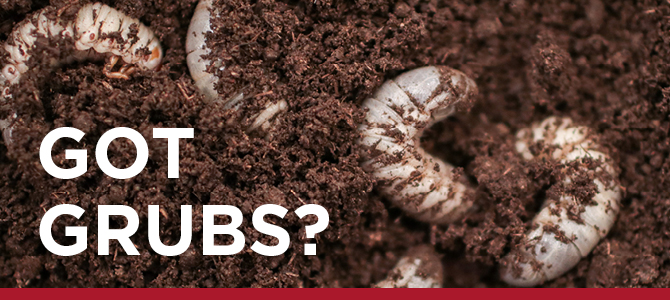
Regardless of where your customers are located, one thing is certain: grubs can ruin even the best of outdoor spaces. Knowing what attracts them and how to determine a treatment plan are crucial parts of keeping them at bay. Along with proper application windows, highly-effective products and a year-over-year commitment are also required to win the battle.
Grubs, or white grubs, is a general term for a group of beetles with a larval stage that damage

turfgrasses. The larvae damage the turfgrass plant by feeding on turfgrass roots, severing the root system but not immediately killing the turfgrass. Damage may not be evident until drought stress or heat stress occurs later in the season.
The white grub species of concern varies by location. West of the Mississippi River, northern masked chafer and southern masked chafer are the most common species, while the Japanese beetle is most common east of the Mississippi. May and June beetles are common across most of the United States.
Adult chafer beetles lay eggs in early to mid summer and the larvae begin to feed on turfgrass roots in August. Japanese beetles have a very similar life cycle timeframe. May and June beetles are slightly different, having a three-year life cycle. Their larvae begin feeding on turfgrass roots in early summer of their first year, all growing season of the second year, and then emerge as adults in their third year.


Life cycle of a typical annual white grub. Image credit: https://extension.entm.purdue.edu/publications/E-271/E-271.html
Lawns can be at risk for grub damage for a few reasons:
- Turfgrass areas are often irrigated and fertilized, which promotes root growth and accumulation of organic matter, making the soil beneath managed turfgrass a welcoming habitat for grubs.
- Trees and shrubbery are also often nearby to provide feeding material for the adult stages of the insect.
Complicating grub management, grub damage is sometimes not immediately evident if precipitation is adequate, with damage becoming evident later in the season when drought or heat stress is present. By this time, it is often too late to control the larvae causing the damage.

Pests can ruin even the best of outdoor spaces. Send pests packing this summer with the GrubOut family of products, designed to tackle damaging sub-surface pests and pesky surface feeders alike. To learn more, click here.

Perfect for late-summer applications, DuoCide works as a rescue product for those who may have missed the early-summer application window. Featuring carbaryl and bifenthrin, DuoCide is a broad-spectrum insecticide designed for the preventative and curative treatment of feeding insects, including white grubs, European crane fly, and many more.

©2021 The Andersons logo is a registered trademark of The Andersons, Inc. GrubOut is a registered trademark of The Andersons, Inc.